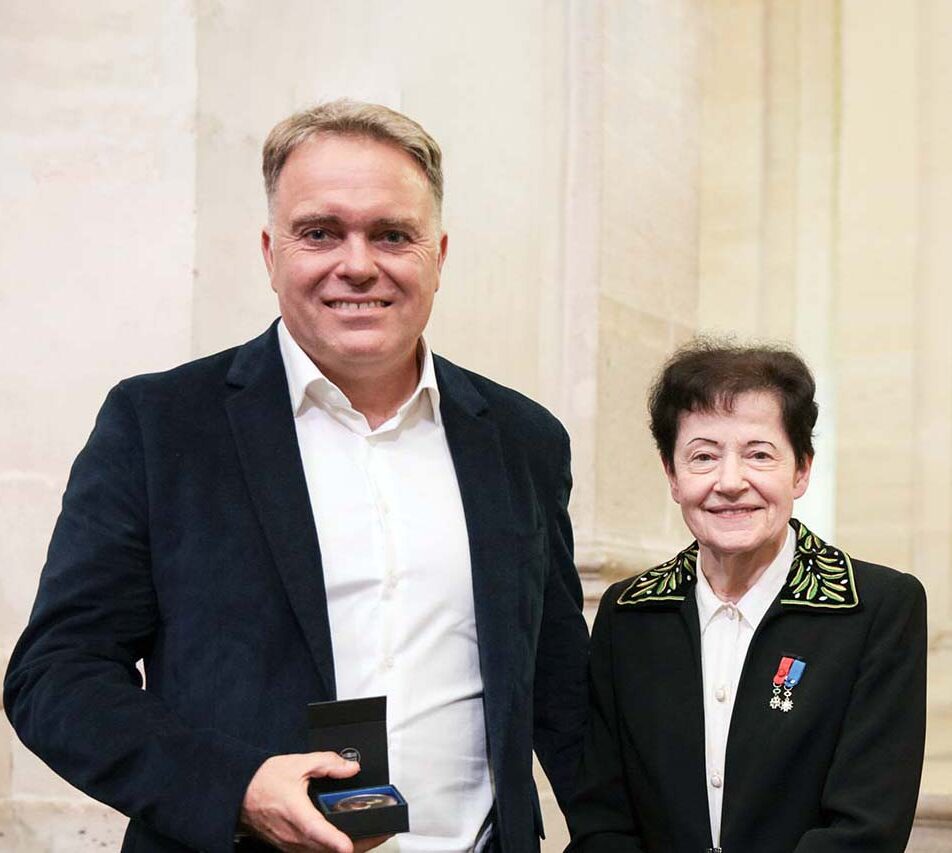Paul-Émile Paradan: a gold digger's perseverance
Mathematics researcher at the Institut montpellierain Alexander Grothendieck of the'Université de Montpellier, Paul-Émile Paradan was awarded the " Alexandre-Joannidès " awarded by theAcademie des sciences. It rewards years of solitary research at the interface of Atiyah-Singer index theory, representation theory and symplectic geometry.

Meeting a mathematician is always preceded by a certain apprehension. How does one approach subjects as complex as they are abstract, explained in inaccessible mathematical language? But Paul-Émile Paradan seems prepared not to impose. The professor of mathematics at the University of Montpellier begins by explaining that, in high school, maths was more a choice for the lazy than the gifted: " When I was young, I was more interested in sports thanschool subjects. It was only mathematics that attracted me, because once you've understood it, there's nothing left to learn - you just have to play .
In his final year of high school, he discovered in an Onisep brochure that mathematicians were a real profession. Although his math teacher at the time advised him against taking this path, he has now been crowned for his career with the "Alexandre-Joannidès" prize, awarded by the Académie des Sciences in October 2024. But Alexander Grothendieck, a researcher at the Institut Montpellier, is not one to dwell on honors. And the presentation of his work, entitled "work at the interface of Atiyah-Singer index theory, representation theory and symplectic geometry", remains elusive. Even the academician Etienne Ghys, who presented the medal under the dome of the Institut de France, sidestepped the subject, sketching out " a geometry that allows us to better understand mechanics " and joking " I'll explain it all to you at the cocktail party ".
Digging the seam
Nevertheless, the story of his career provides an insight into how the mathematical sciences work: a scientific community working around the innovative ideas of its most eminent representatives. For example, Alexandre Grothendieck, for whom the Montpellier laboratory is named, was an international leader in algebraic geometry in the 1960s, and was awarded the Fields Medal in 1966. His colossal legacy has inspired generations of mathematicians. Another outstanding example is the case ofEdward Witten, physicist and mathematician, Fields Medal winner in 1990, who had a profound impact on contemporary mathematics by applying his knowledge to physics.
During his thesis, Paul-Émile Paradan tackled a non-Abelian localization formula conjectured by Edward Witten in 1992. He devoted his thesis and post-doctorate, between 1993 and 1998, to clarifying this localization formula. I was lucky," he says, "because my results did not go unnoticed by the mathematical community. Especially as some people thought the formula was unworkable ," he remarks. " Mathematicians have to be very persistent, a bit like gold diggers. You find a vein - an interesting question whose solution seems feasible - and you dig for years ". In the 1990s, Witten's idea was used to answer a conjecture put forward by G. Guillemin and S. Steinberg in Steinberg in 1982, entitled "Quantization commutes with reduction" and noted [Q,R]=0.
The researcher's solitude
Although the complete proof of this conjecture was obtained by E. Meinrenken in 1998, Paul-Émile Paradan reoriented his research towards geometric quantification and reflected on a proof of [Q,R]=0 in a more general framework(Witten non abelian localization for equivariant K-theory, and the $[Q,R]=0$ theorem, 2019, American mathematical, society). The aim was to develop a formal geometric quantification and apply it to the representation theory of Lie groups and the Kirillov orbit method(Horn problem for quasi-hermitian Lie groups, 2022, Cambridge Univesity Press)). " It took me fifteen years to complete this project. For a while, I thought I wouldn't make it, but I persevered because it would have been even more complicated to turn the page. " In recent years, Paul-Emile Paradan has turned his attention to convexity problems associated with projections of adjoint orbits.
Mathematics enables research to be carried out without contingency, but the life of a Professor is not without constraints. Research activity has to be combined with numerous administrative and academic responsibilities, in which Paul-Emile Paradan played his part, thus breaking with the researcher's solitude. Indeed, Paul-Émile Paradan is one of those mathematicians who mostly works alone. " For a long time, I was the only one working on the mathematical tools I was developing ". Not entirely alone, however, as this would be to forget his thesis supervisor, mathematician Michèle Vergne, who launched him on E. Witten's localization formula. At 80, he still has his ear. " Even today, when I have an idea, I turn to her; she always has avery perceptive commentto make ", says the researcher, who almost makes you forget that he already has a busy career behind him.
